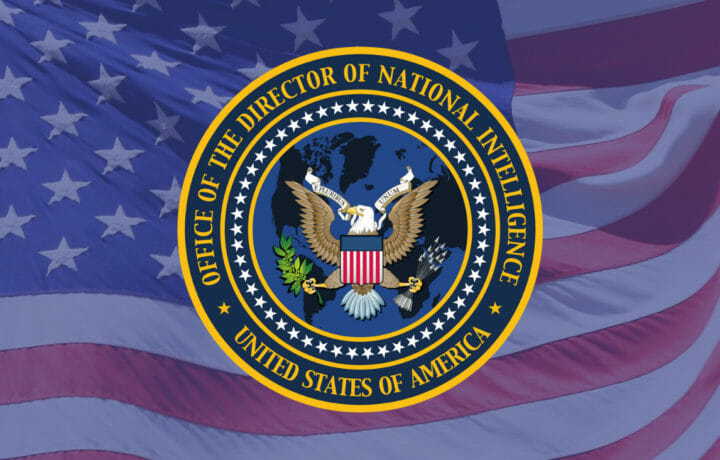Before Lora Shiao was appointed as the Office of the Director of National Intelligence (ODNI) chief operating officer she served as the Acting Director of National Intelligence until Avril Haines was sworn in.
Shiao brings a wealth of experience from organizations within ODNI, and as the Intelligence Community’s COO, she is responsible for the strategic management, including financial, corporate governance, security, counterintelligence, and talent management, among many other things through the day to day operations of the organization.
In a discussion with the Intelligence and National Security Alliance (INSA), Shiao shared insights on the IC strategy post-COVID-19.
RESILIENCY within the IC and ODNI
Shiao notes that the past year has brought clear lessons learned through COVID-19, remote work, and information sharing between agencies.
There was no handbook for something like this, and she even relays that she’s currently working on the ODNI handbook, albeit, with hopes this never happens again. ODNI has already learned that officers need to let the data be their guide and be transparent with the findings from that data, said Shiao. ODNI has continued to map cases through essential national security personnel required to work in SCIFs through this time, conduct contact tracing, drawing information from building occupancy at different classified facilities, case numbers, and vaccine data, all to ensure congressional overseers know what is going on and that the executive branch is informed about the status of key national security personnel.
A silver lining that has stabilized the national security workforce is that because of the classified nature of national security workers, they are deemed essential in crises situations.
But Shiao notes as a lesson learned that even more so now, some of these cleared personnel’s greatest achievements remain secret for many years and even maybe a lifetime (and now from their classified coworkers who may be on an opposite schedule). And so this quiet service, though still a heroic service, needs to be remembered, and the sacrifices individuals are making (especially during a pandemic) need to continue to be noticed by leaders and valued, which will help to keep these teams have high morale.
Security CLEARANCE REFORM AND STRATEGIC PRIORITIES
In terms of security clearance reform, Shiao cites reciprocity as the biggest hindrance to progress within the bigger umbrella of Trusted Workforce 2.0. Reciprocity between agencies, and even between collaborative partners in the private sector, is a very important stable component for individuals to be able to receive IC credentials, move to other agencies and gain new skills, do externships, work in the commercial sector and come back into the IC, and ultimately strengthen ODNI’s program for junior candidates to become joint duty officers and perform different assignments. Although it’s not perfect, it’s on the agency’s radar as an issue to overcome.
Strategic priorities within the COO office surround employee and candidate engagement. Shiao hopes to “empower employees to get involved in the change they want to see at ODNI.” Bureaucracies are difficult to navigate within the federal government, but the office wants an “ethos that is surrounded by creativity, innovation, and being ok with failure, creating this safe place for grassroots ideas.”
TELEWORK AND OSINT
Along the lines of the COO’s office in reciprocity for clearance reform, ODNI is also hoping for more telework options to get people involved in service – mapping out training in a smart way and getting involved in employee resource groups – creating a space where you can cross-pollinate to another mission areas and move around the enterprise.
But it wouldn’t be telework in the IC if Shiao didn’t touch on OSINT and how the office envisions its future. At the executive level, there have been a lot of conversations – but ODNI is taking a realistic approach in that the agency understands at the current moment, we are still gathering the requirements, challenges, etc. and then will consider what makes most sense (in policy and practice) moving forward as an IC.
Tying OSINT and telework together brings forth a huge goal for security clearance reform: focusing on initiatives that can be brought in at the unclassified level while individuals going through the background investigation process are waiting on their security clearance adjudication. But this will take a village: patience on the candidate side, understanding from the defense contractor or government customer with a vacancy, and leniency on the teammates who may be pulling the classified weight.
Diversity Equity and Inclusion
ODNI has made DEI within their structure a priority: advancing racial equity at the executive level but also working to get every employee engaged to make real progress. It includes an executive diversity council that hosts listening sessions across the entire enterprise to ensure that situations that shake the safety of our nation do not justify ignorance or insensitivity toward a certain group.
Shiao encourages that “everyone in the organization needs to be a part of the solution.” Even through outreach and recruiting tactics, ODNI was able to increase diverse applicants by 700% – it shows that the candidates are there, but the processes in place may have deterred them before these initiatives were rolled out.
ODNI is an organization that is focused on building bridges and information sharing in the IC. Lora Shiao is one of the faces fostering that human engagement as we embark on a new year with unknown challenges.




